Well here we are, in the heart of the holiday season and 2011 is about to become a memory. November was another busy month for Creative Ventures. Here are a few highlights:
 Dazzling Blue: What a fantastic opportunity I had to deliver the keynote address to the Dallas Top 100, the top 100 companies to work for in the Dallas Metroplex. About 1,000 people filled the Fairmont Hotel in downtown Dallas. The biggest challenge was being able to adapt the content to fit a 20 minute timeframe. A great exercise for a possible TED gig?
Dazzling Blue: What a fantastic opportunity I had to deliver the keynote address to the Dallas Top 100, the top 100 companies to work for in the Dallas Metroplex. About 1,000 people filled the Fairmont Hotel in downtown Dallas. The biggest challenge was being able to adapt the content to fit a 20 minute timeframe. A great exercise for a possible TED gig?
Then off to Phoenix where I had the chance to participate in a conference I had a hand in designing, where Dazzling Blue made its debut for the financial services industry.
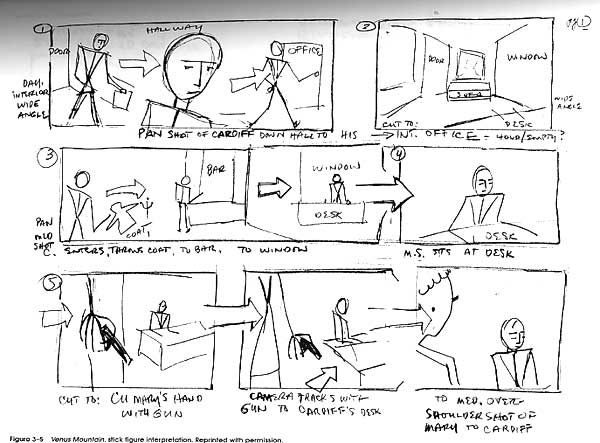 The Idea of "STORY": In the development of a high-level client experience, story is everything. For the past month and a half I have been working on two major story projects. We have created a story-based strategy around these three core elements:
The Idea of "STORY": In the development of a high-level client experience, story is everything. For the past month and a half I have been working on two major story projects. We have created a story-based strategy around these three core elements:
- What do you do?
- What value do you bring?
- What makes you different?
Once the story is created we move to delivery methods that utilize rich media, social networking, web-based strategies, and personal delivery design. The project launches for both clients on 1/1/2012.
 Creative Ventures Projects: As my schedule starts to gain a semblance of control, I get a chance to return to some of my internal projects that have lagged due to my wonderful clients' needs:
Creative Ventures Projects: As my schedule starts to gain a semblance of control, I get a chance to return to some of my internal projects that have lagged due to my wonderful clients' needs:
- New Web Site: This project has been in the works for a while and we are almost ready to launch. My web team, led by John Peterson, has a fantastic new simplified design, including a re-launch of the blog. We have a January 2012 launch date.
- New Program Development: The Half Life of Ideas is in the early storyboard development phase. This program is all about how ideas develop, the tools for leveraging and positioning ideas, and why some are hits while others aren't. It has a 2012 release date.
- Ebook: I have my first simple eBook in the works, The 21 Laws of Creative Ventures. It's about our core operating laws and how we look at all projects.
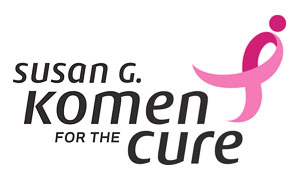 Susan G Komen For The Cure: This is a project almost too good to be true. Chris Ryan, my managing agent, started conversations about how we could help with their mission "to end breast cancer forever." An idea for a fund raiser started to develop, and now I'm working on a huge multimedia show called "Why We Love Movies." The idea is an evening with food and drink around the love of movies and their impact on how we think, what we feel, and how we see the world. The tentative date is 2/23/12. I will keep you informed as this incredibly fun project moves forward.
Susan G Komen For The Cure: This is a project almost too good to be true. Chris Ryan, my managing agent, started conversations about how we could help with their mission "to end breast cancer forever." An idea for a fund raiser started to develop, and now I'm working on a huge multimedia show called "Why We Love Movies." The idea is an evening with food and drink around the love of movies and their impact on how we think, what we feel, and how we see the world. The tentative date is 2/23/12. I will keep you informed as this incredibly fun project moves forward.
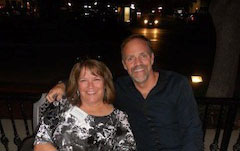 As this is the last newsletter of 2011, I want to take this opportunity to thank you all for the incredible opportunity, support and friendship I found this year. I have so much to be thankful for. Special thanks to Chris Ryan who continues to develop new relationships, Dr. Jim Hengstenberg who is not only a dear friend but a great strategist who also edits all my writing so I sound like I know what I'm doing, Dylan who helped with my SEO stuff, and Colin who created new templates, data update and produces the new podcast. Of course without the support of the love of my life, Laura, this ride just wouldn't matter.
As this is the last newsletter of 2011, I want to take this opportunity to thank you all for the incredible opportunity, support and friendship I found this year. I have so much to be thankful for. Special thanks to Chris Ryan who continues to develop new relationships, Dr. Jim Hengstenberg who is not only a dear friend but a great strategist who also edits all my writing so I sound like I know what I'm doing, Dylan who helped with my SEO stuff, and Colin who created new templates, data update and produces the new podcast. Of course without the support of the love of my life, Laura, this ride just wouldn't matter.
Merry Christmas and Happy Holidays!
The Bonus of the Loyal Client.
Loyalty demands participation, the rest is simply wishful thinking.
-Unknown
|
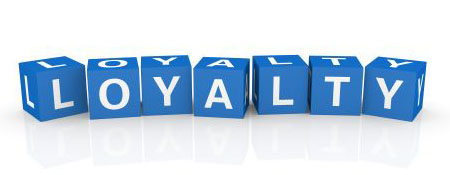
It's no surprise that in the war for business, the customer is the battleground. Companies don't go out of business for lack of money: they find their demise in a lack of customers. Statistics abound over the cost of generating a new customer versus the cost of maintaining one. In some studies it is determined to be anywhere from 7 to 10 times more expensive to nurture a new relationship than to protect and grow an existing one. In the 2003 Reicheld/Sasser study the authors discovered a 5% increase in customer retention can result in upwards of a 25% increase in profitability. These simple business facts have resulted in a huge increase in customer loyalty strategies and programs. In 2010 there were over 1.8 billion members in U.S. business loyalty programs, up from 1.3 billion in 2008.
I have the honor of being involved in three separate planning and design projects based on client loyalty strategies. Two are service-related and one is for a retail client. Not only have these projects been interesting and fun, they have also been "fascinating," filled with analysis, ideas and conflict. As a reader you probably guess the role I play: it's to simplify, look for key patterns, and bring a larger multi-industry framework to the project.
Let's start with the "duh" part of the equation. You have to have a great product or service. Without that, there is no reason to talk about loyalty, so let's make the assumption you have the core element. Here are a few basics of the concept.
Loyalty programs:
- Are aimed at the best and most profitable clients/customers
- Increase the volume of business
- Create fertile referral possibilities
- Create purchases beyond their traditional orders
- Create a value barrier against the competition trying to steal business
With these important cornerstones you can see how critical a well-designed and executed loyalty plan can be. In this short space let me give you just a couple of things to think about. Loyalty plans in retail (or transactional) businesses use a simple design path: the number of purchases or amount you spend get you in and you are usually rewarded with some free stuff (a very simplified description, but you get the point). Loyalty plans in Serviced-related client delivery is a little more complicated, but still shares some of the transactional aspects:
 Stuff: I define "stuff" strategies as "Buy enough from me and you will get stuff." It might be a Tiffany trophy inducting you into the million dollar club, or it might be a box of logo golf balls and a shirt, or maybe a custom gift bag on your birthday. If you can open it, it's stuff. These aren't bad ideas and can play a role somewhere in the strategy, but they are somewhat universal (read "common") in their application. Don't believe me? Just check the water hazard at your nearest golf course. It's full of company logo golf balls.
Stuff: I define "stuff" strategies as "Buy enough from me and you will get stuff." It might be a Tiffany trophy inducting you into the million dollar club, or it might be a box of logo golf balls and a shirt, or maybe a custom gift bag on your birthday. If you can open it, it's stuff. These aren't bad ideas and can play a role somewhere in the strategy, but they are somewhat universal (read "common") in their application. Don't believe me? Just check the water hazard at your nearest golf course. It's full of company logo golf balls.
 Company Value: This is where I think the greatest opportunity lies. It is the focus of my strategies to create separation from the rest of the programs out there (read "unique"). What if at some point in the relationship your clients could access something of great value to their business success? What if by reaching a certain goal they could get help in making their businesses grow, in improving their teams or their skills? What if they could get that only from you, and you become the center of influence in building their careers and practices? What if you are the thought leader?
Company Value: This is where I think the greatest opportunity lies. It is the focus of my strategies to create separation from the rest of the programs out there (read "unique"). What if at some point in the relationship your clients could access something of great value to their business success? What if by reaching a certain goal they could get help in making their businesses grow, in improving their teams or their skills? What if they could get that only from you, and you become the center of influence in building their careers and practices? What if you are the thought leader?
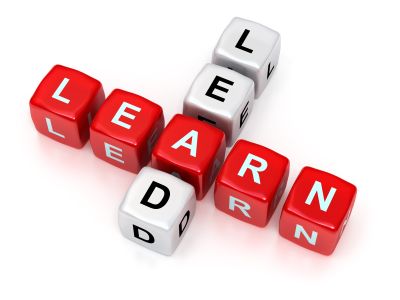 Imagine you could create a "value community" where the foundation revolves around your unique ability to help the members of that community to improve their skills, to move their business from the leading edge to the cutting edge. Now imagine that this idea plays a strong role in the very reason your clients do business with you. This strategy is all based on a strong value you possess, so it involves the development of a platform full of client value. "Doing business with me will make you better" is a powerful incentive, and I believe the foundation of an effective relationship loyalty program.
Imagine you could create a "value community" where the foundation revolves around your unique ability to help the members of that community to improve their skills, to move their business from the leading edge to the cutting edge. Now imagine that this idea plays a strong role in the very reason your clients do business with you. This strategy is all based on a strong value you possess, so it involves the development of a platform full of client value. "Doing business with me will make you better" is a powerful incentive, and I believe the foundation of an effective relationship loyalty program.
Worth it? Center of influence and thought leader strategies are at the very core of what makes for industry leaders. They build their competitive advantage by being important to the growth of their clients. Golf balls and crystal plaques are nice, but loyalty can be a leverage point of separation and differentiation showing a belief that value is based beyond stuff.
 |
Home Sweet Home: The housing sector is one of the four horsemen of the economy (along with light vehicle sales, change in private inventories, and capital goods orders), and housing showed a little life in October. Existing home sales were up 1.5% and beat expectations in 3 of 4 regions. Reduction of existing home inventories impacts new home starts, which showed an 11% increase with new home permits also beating expectations.
|
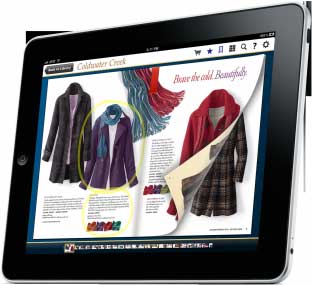 |
Catalog Mailbox Death: Thought the catalog business was on the way out thanks to ecommerce? WRONG. In 2010 over 2 BILLION catalogs were mailed, which is an 11% increase from just two years ago. So, the smart guys at Padopolis created an iPad app called Catalog Spree that combines hundreds of catalogs and email blasts into one location. In a tight technology venture capital market, these guys were able to generate $1.3 million in new funds to further develop their idea. The app is only available on the iPad but will be ready for the iPhone in about 60 days.
|
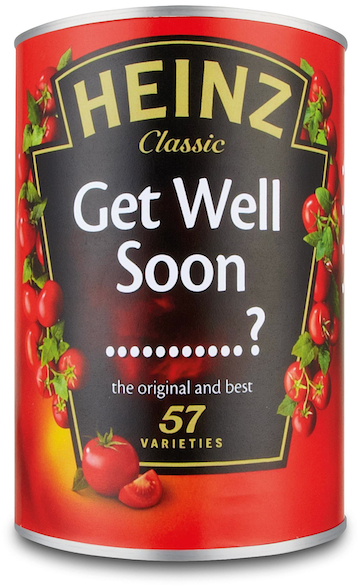 |
Soup Get Well Card: The smart folks at Heinz, using Facebook as a platform, created a new way to cheer up your sick friends and family members. You send a customized can of chicken noodle soup with a personalized "get well" greeting. Think of it as a social network get well card, only you can eat it! Once the order is placed they can deliver it in 2-3 days. The idea caused a Twitter explosion and showed the power of launching an idea in the social network. There's lots to gain from learning about the power of "customized" strategies. |
Interested in these ideas?
FOLLOW STEVE ON TWITTER.COM — CREATIVEVENTURE
FOLLOW STEVE ON FACEBOOK.COM — STEPHEN HARVILL
You can contact Steve at steve@creativeventures.com or give him a call at 972-490-7717.
See more at creativeventures.com and stephenharvill.com
Subscribe to the Creative Ventures newsletter
 Dazzling Blue: What a fantastic opportunity I had to deliver the keynote address to the Dallas Top 100, the top 100 companies to work for in the Dallas Metroplex. About 1,000 people filled the Fairmont Hotel in downtown Dallas. The biggest challenge was being able to adapt the content to fit a 20 minute timeframe. A great exercise for a possible TED gig?
Dazzling Blue: What a fantastic opportunity I had to deliver the keynote address to the Dallas Top 100, the top 100 companies to work for in the Dallas Metroplex. About 1,000 people filled the Fairmont Hotel in downtown Dallas. The biggest challenge was being able to adapt the content to fit a 20 minute timeframe. A great exercise for a possible TED gig? The Idea of "STORY": In the development of a high-level client experience, story is everything. For the past month and a half I have been working on two major story projects. We have created a story-based strategy around these three core elements:
The Idea of "STORY": In the development of a high-level client experience, story is everything. For the past month and a half I have been working on two major story projects. We have created a story-based strategy around these three core elements: Creative Ventures Projects: As my schedule starts to gain a semblance of control, I get a chance to return to some of my internal projects that have lagged due to my wonderful clients' needs:
Creative Ventures Projects: As my schedule starts to gain a semblance of control, I get a chance to return to some of my internal projects that have lagged due to my wonderful clients' needs: Susan G Komen For The Cure: This is a project almost too good to be true. Chris Ryan, my managing agent, started conversations about how we could help with their mission "to end breast cancer forever." An idea for a fund raiser started to develop, and now I'm working on a huge multimedia show called "Why We Love Movies." The idea is an evening with food and drink around the love of movies and their impact on how we think, what we feel, and how we see the world. The tentative date is 2/23/12. I will keep you informed as this incredibly fun project moves forward.
Susan G Komen For The Cure: This is a project almost too good to be true. Chris Ryan, my managing agent, started conversations about how we could help with their mission "to end breast cancer forever." An idea for a fund raiser started to develop, and now I'm working on a huge multimedia show called "Why We Love Movies." The idea is an evening with food and drink around the love of movies and their impact on how we think, what we feel, and how we see the world. The tentative date is 2/23/12. I will keep you informed as this incredibly fun project moves forward. As this is the last newsletter of 2011, I want to take this opportunity to thank you all for the incredible opportunity, support and friendship I found this year. I have so much to be thankful for. Special thanks to Chris Ryan who continues to develop new relationships, Dr. Jim Hengstenberg who is not only a dear friend but a great strategist who also edits all my writing so I sound like I know what I'm doing, Dylan who helped with my SEO stuff, and Colin who created new templates, data update and produces the new podcast. Of course without the support of the love of my life, Laura, this ride just wouldn't matter.
As this is the last newsletter of 2011, I want to take this opportunity to thank you all for the incredible opportunity, support and friendship I found this year. I have so much to be thankful for. Special thanks to Chris Ryan who continues to develop new relationships, Dr. Jim Hengstenberg who is not only a dear friend but a great strategist who also edits all my writing so I sound like I know what I'm doing, Dylan who helped with my SEO stuff, and Colin who created new templates, data update and produces the new podcast. Of course without the support of the love of my life, Laura, this ride just wouldn't matter.



 Stuff: I define "stuff" strategies as "Buy enough from me and you will get stuff." It might be a Tiffany trophy inducting you into the million dollar club, or it might be a box of logo golf balls and a shirt, or maybe a custom gift bag on your birthday. If you can open it, it's stuff. These aren't bad ideas and can play a role somewhere in the strategy, but they are somewhat universal (read "common") in their application. Don't believe me? Just check the water hazard at your nearest golf course. It's full of company logo golf balls.
Stuff: I define "stuff" strategies as "Buy enough from me and you will get stuff." It might be a Tiffany trophy inducting you into the million dollar club, or it might be a box of logo golf balls and a shirt, or maybe a custom gift bag on your birthday. If you can open it, it's stuff. These aren't bad ideas and can play a role somewhere in the strategy, but they are somewhat universal (read "common") in their application. Don't believe me? Just check the water hazard at your nearest golf course. It's full of company logo golf balls. Company Value: This is where I think the greatest opportunity lies. It is the focus of my strategies to create separation from the rest of the programs out there (read "unique"). What if at some point in the relationship your clients could access something of great value to their business success? What if by reaching a certain goal they could get help in making their businesses grow, in improving their teams or their skills? What if they could get that only from you, and you become the center of influence in building their careers and practices? What if you are the thought leader?
Company Value: This is where I think the greatest opportunity lies. It is the focus of my strategies to create separation from the rest of the programs out there (read "unique"). What if at some point in the relationship your clients could access something of great value to their business success? What if by reaching a certain goal they could get help in making their businesses grow, in improving their teams or their skills? What if they could get that only from you, and you become the center of influence in building their careers and practices? What if you are the thought leader? Imagine you could create a "value community" where the foundation revolves around your unique ability to help the members of that community to improve their skills, to move their business from the leading edge to the cutting edge. Now imagine that this idea plays a strong role in the very reason your clients do business with you. This strategy is all based on a strong value you possess, so it involves the development of a platform full of client value. "Doing business with me will make you better" is a powerful incentive, and I believe the foundation of an effective relationship loyalty program.
Imagine you could create a "value community" where the foundation revolves around your unique ability to help the members of that community to improve their skills, to move their business from the leading edge to the cutting edge. Now imagine that this idea plays a strong role in the very reason your clients do business with you. This strategy is all based on a strong value you possess, so it involves the development of a platform full of client value. "Doing business with me will make you better" is a powerful incentive, and I believe the foundation of an effective relationship loyalty program.


